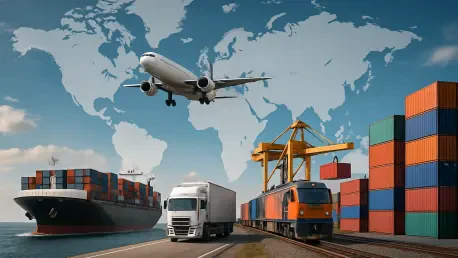In an era defined by rapid technological shifts, escalating climate concerns, and unpredictable geopolitical tensions, global supply chains are facing unprecedented challenges that demand innovative solutions. The intricate networks that facilitate the movement of goods across borders are being tested like never before, with disruptions ranging from natural disasters to trade disputes exposing vulnerabilities. Research initiatives, such as those involving over 30 experts from 11 institutions, have delved into these complexities, uncovering how businesses are navigating this turbulent landscape. Their findings reveal a landscape where adaptability is not just an advantage but a necessity. As firms grapple with economic shocks and shifting trade dynamics, the focus has shifted toward resilience through strategic reconfiguration and collaboration. This exploration sets the stage for understanding the mechanisms driving change and the broader implications for global commerce in a world that refuses to stand still.
Navigating Disruption Through Strategic Networks
Amid the chaos of global disruptions, companies are demonstrating remarkable diversity in their approaches to maintaining operational stability. Many are reconfiguring supplier networks, seeking to diversify sources and reduce dependency on single regions or partners. Research highlights that businesses embedded within innovative, knowledge-sharing networks tend to weather storms more effectively, as they can leverage collective expertise to anticipate and respond to challenges. Collaboration emerges as a linchpin for success, enabling firms to share critical insights and adapt swiftly to unexpected economic or environmental shocks. Beyond mere survival, these networks foster an environment where proactive strategies can turn potential setbacks into opportunities for growth. This adaptability is particularly evident in industries where supply chain interruptions can have cascading effects on production and delivery timelines. The emphasis on building robust connections underscores a shift toward a more interconnected and responsive global trade framework, prioritizing flexibility over rigid structures.
Innovation as the Backbone of Resilience
Looking at the broader picture, innovation stands out as a critical driver for supply chain resilience and economic vitality. Studies consistently show a strong link between innovative practices, job creation, and regional growth, positioning creativity as a cornerstone for overcoming modern challenges. However, translating cutting-edge research into marketable products remains a hurdle, particularly in regions like Europe where this gap can stifle economic benefits. Addressing this disconnect requires policies that bridge the divide between theoretical advancements and practical applications, ensuring that breakthroughs do not remain confined to laboratories. Furthermore, the interplay between knowledge flows and the trade of goods reveals a deeper connection, where advancements in one sphere inevitably influence the other. Effective strategies must therefore consider these interdependencies, crafting approaches that enhance both innovation and trade simultaneously. Reflecting on past efforts, the focus on fostering such synergies has proved instrumental in navigating turbulent times, offering valuable lessons for future policy design and corporate planning.









